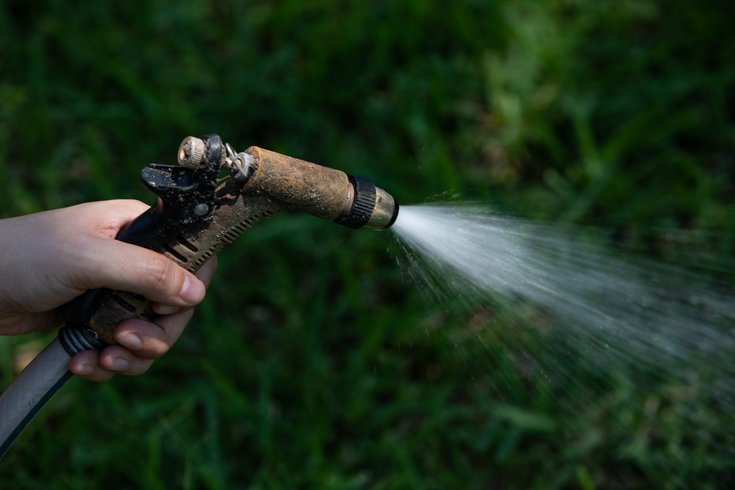
June 16, 2023
 Angela Piazza/Caller-Times-USA TODAY NETWORK
Angela Piazza/Caller-Times-USA TODAY NETWORK
Pennsylvania issued a statewide drought watch due to dry conditions, despite rain earlier this week and in the forecast. Residents are encouraged to reduce non-essential water use, like only watering lawns when necessary. This is a file photo taken earlier this June in Texas.
Pennsylvania issued a statewide drought watch Thursday evening and is urging residents and businesses to conserve water, officials from the Department of Environmental Protection said.
While Pennsylvanians are not required to conserve water, officials are encouraging people to reduce their non-essential water use by 5-10%, meaning running dishwashers and washing machines less often, turning faucets off while brushing teeth and shaving, taking shorter showers, not washing hair daily, watering lawns and gardens only when necessary, avoiding car washing and checking for household leaks.
18 water suppliers in the state are asking for voluntary water conservation in their communities, including 11 suppliers in Bucks County, one in Chester County and one in Montgomery County. No water suppliers from Philadelphia or Delaware County have asked users to reduce water use, though the DEP has an ongoing list available on its website.
The drought watch is the first in a multi-step approach to tracking and assessing water supply conditions, drought risk and other factors, including water flow in rivers and streams, groundwater levels and soil moisture. While drought watches and drought warnings are issued by the DEP, drought emergencies that require water reduction mandates must be approved by Gov. Josh Shapiro.
"Although this week has brought some welcome rain to much of the state, it's not enough to make up for the lack of rainfall this spring, following a winter that brought little snowfall in many areas," said Rich Negrin, acting secretary of the DEP. "As a result, we're seeing lowered stream flows, dropping groundwater levels, and persistent precipitation deficits. Water conservation, always a good practice, is especially helpful now as it'll lessen potential future impacts on water supplies if rainfall continues to be scant this summer."
DEP Declares Statewide Drought Watch, Recommends Voluntary Water Conservation: https://t.co/225c2QP1Yi pic.twitter.com/msvMkrSStu
— PA Department of Environmental Protection (@PennsylvaniaDEP) June 15, 2023
Most of Philadelphia, Delaware and Bucks counties are abnormally dry, according to the U.S. Drought Monitor. Portions of Montgomery and Chester counties are experiencing moderate drought, as are most parts of the state.
When conditions are abnormally dry, crop growth becomes stunted, lawns turn brown and the risk of wildfires rises. In moderate drought conditions, trees, crops and landscaping become stressed, irrigation increases and reservoir and lake levels dip below normal.
Officials are urging Pennsylvanians to be cautious of the increased risk of wildfires. Low precipitation levels have increased the number of wildfires in the state this year, with 1,400 wildfires reported in 2023, compared to 1,023 in all of 2022. This year's wildfires have burned 8,500 acres of land, compared to 2,700 acres last year.
"We've had an unprecedented year for wildfires in the Commonwealth, and we encourage all Pennsylvanians to act responsibly to prevent wildfires as dry conditions persist," said Cindy Adams Dunn, secretary of the Department of Conservation and Natural Resources. "Pennsylvania wildfires pose a threat to public health because of the smoke they create. Though significantly smaller than the 10-acre wildfires in Canada, Pennsylvania wildfires still create the same hazardous air conditions in the areas impacted."
Philadelphia is recovering from several days of smog and hazardous air quality stemming from ongoing wildfires in Canada, which coated the city and its suburbs in haze for several days before clearing up last weekend. Since 99% of wildfires are caused by people, DCNR is encouraging residents to understand the risk factors that contribute to wildfires, including dry conditions, low humidity and forms of ignition like car exhaust or burning trash.
There may be some relief this weekend, as the National Weather Service expects showers and thunderstorms in Philly.
The DEP provides daily updates on its drought conditions along with tips for water conservation. Additional drought monitoring from the U.S. Geological Survey can be found using its state map.